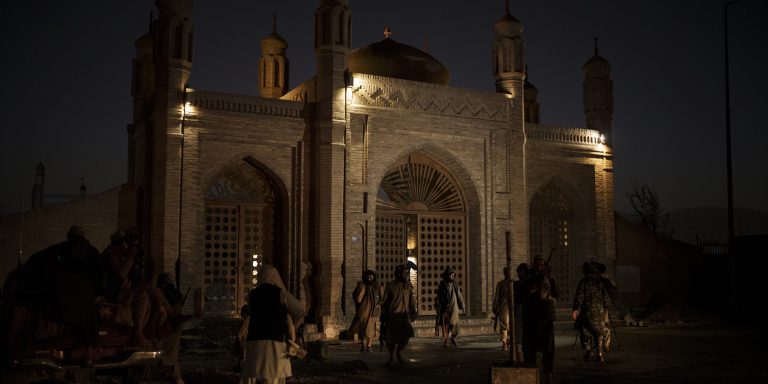INTELBRIEF
October 6, 2021
IntelBrief: Islamic State Khorasan Ramps Up Attacks against Taliban in Afghanistan

Bottom Line Up Front
- With U.S. and allied troops withdrawn from the country and the Taliban now governing, ISK is waging a guerilla campaign against the Taliban.
- ISK sees the Taliban as an existential threat and as such, will stop at nothing to undermine the legitimacy of their new government.
- Another part of ISK’s strategy may be an attempt to lure Taliban fighters to break away from the organization and join the Islamic State’s ranks.
- The Taliban was unquestionably an effective insurgent force, but now the group is facing a different role—that of counterinsurgent—and is struggling to prevent asymmetric and irregular attacks from ISK.
As many counterterrorism analysts expected, the Islamic State Khorasan (ISK) attack on the Kabul airport marked the beginning of a new phase in the conflict in Afghanistan. With U.S. and allied troops withdrawn from the country and the Taliban now governing, ISK has begun to wage a guerilla campaign against the Taliban. Between September 18 and October 4, ISK claimed twenty-eight separate attacks, including a bombing in Kabul earlier this week targeting the funeral of the mother of the Taliban’s chief spokesperson. The attack occurred at the entrance of the Eid Gah Mosque in Kabul. In its propaganda and media, ISK continuously derides the Taliban as “apostates” and mocks its members as puppets of the Americans. Both the Taliban and ISK have targeted ethnic Hazaras in Afghanistan, as well as other ethnic and religious minorities, reviving recollections of the Taliban’s previous stint in power and belying any rhetoric about reform and inclusivity.
It is clear that ISK maintains the capability to ramp up its operational tempo when necessary. Over the first four months of 2021, the group was responsible for 77 attacks, which is more than a twenty percent increase from the same period during the previous year. ISK sees the Taliban as an existential threat and as such, will stop at nothing to undermine the legitimacy of the Taliban government. Indeed, ISK is merely taking a page from the Taliban playbook. Over the past two decades, the Taliban and its Haqqani network and al-Qaeda allies, often through the Kabul Attack Network (KAN), repeatedly attacked Afghan government officials, Afghan National Security Forces (ANSF), and U.S. and coalition soldiers in order to demonstrate to Afghan civilians that the government in Kabul was weak and ineffective. Now, through relentless and highly lethal attacks, ISK is demonstrating to the Afghan people how the Taliban is unable to protect the population. In the midst of all this, civilians are facing a crippling combination of humanitarian needs, repression and violence on multiple fronts.
Another part of ISK’s strategy may be an attempt to lure Taliban fighters to break away from the organization and join the Islamic State’s ranks. Splintering will attenuate the Taliban, while simultaneously affording ISK with an opportunity to carve out safe haven in Nangarhar, Kunar, and other parts of Afghanistan with an influential Salafi presence. ISK has also begun actively recruiting foreign fighters to travel to Afghanistan and reinforce its organization with new members. The Islamic State central’s media apparatus can serve as a force multiplier for its regional branches and affiliates. ISK’s focus is almost exclusively local, meaning its attacks are directed toward the Taliban and targets in Afghanistan. However, ISK has been linked to transnational terrorism plots in Europe, and there is growing concern that as the group continues to evolve, it could set its sights again on attacking the West. The presence of foreign fighters further internationalizes the threat and allows ISK to project greater influence.
The Taliban was unquestionably an effective insurgent force, but now the group is facing a different role—that of counterinsurgent—and is struggling to prevent asymmetric and irregular attacks from ISK insurgents. ISK is experienced in classic insurgent tactics, including small arms fire, ambushes, hit-and-run attacks, and improvised explosive devices (IEDs). The group also employs suicide bombers for spectacular attacks. With Afghanistan’s economy in freefall and reports of spreading famine, the Taliban will be challenged to bring even a modicum of stability to the war-torn country. If the Taliban is unable to establish a monopoly on the use of violence within Afghanistan’s borders, groups like ISK will have the opportunity to resurge and regenerate its networks. To combat ISK, the Taliban is going to rely on the Haqqani network, al-Qaeda, and other violent non-state actors for manpower, combat expertise, and logistical support.